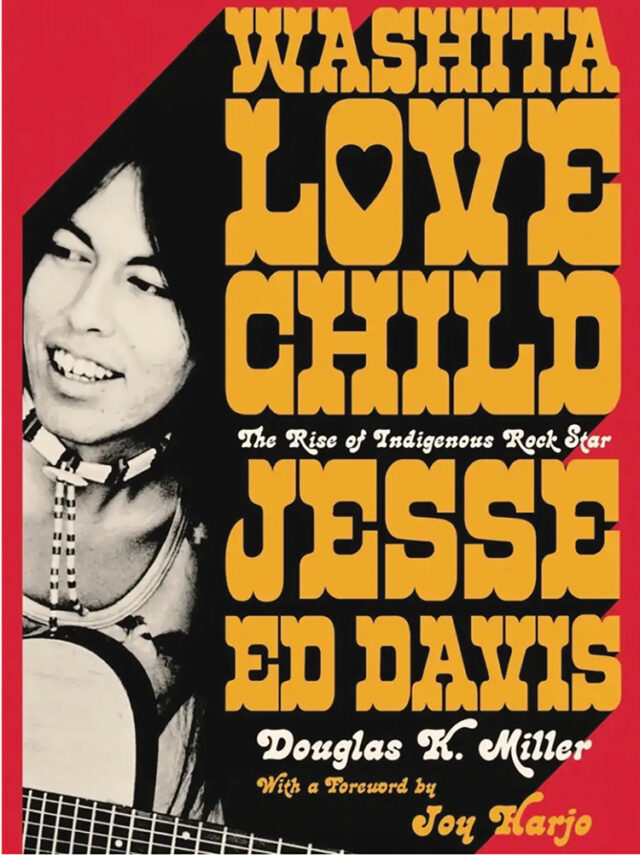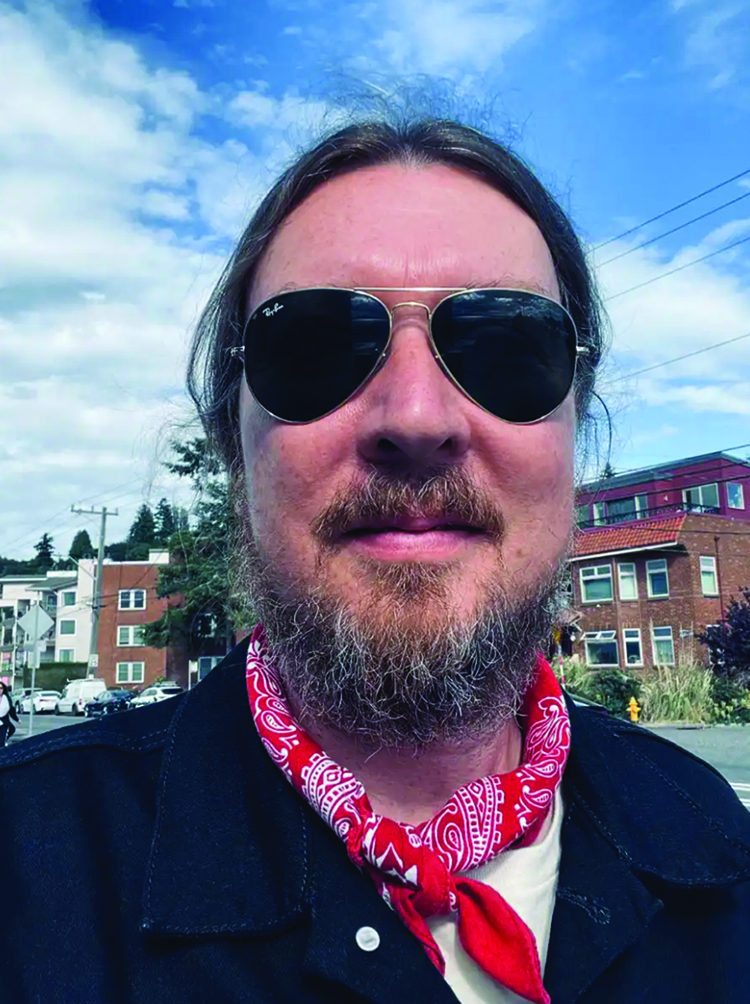
Review by Leah Lemm/MPR News
Washita Love Child: The Rise of Indigenous Rock Star Jesse Ed Davis
By Douglas Miller
Publisher: Liveright
Publish: November 2024
400 pages
The book “Washita Love Child: The Rise of Indigenous Rock Star Jesse Ed Davis” follows the arc of the Oklahoman’s life – from his homelands and ancestors, throughout his music career in the 1970s and 1980s, and his early death.
Davis played guitar alongside musicians such as Bob Dylan, Taj Mahal, Jackson Browne, John Lennon and John Trudell.
Before author Douglas Miller entered kindergarten, he listened to Davis on Jackson Browne’s tune “Doctor My Eyes.” In the book’s preface, Miller remembers reading album liner notes and later becoming a musician. Miller says he spent several years in Minneapolis playing with his band and studying history.
“I like to tell people I’ve been listening to Jesse Ed Davis since my earliest memories and ‘Doctor My Eyes’ was Jackson Browne’s first top 10 hit on that first album. And Jesse Ed Davis played the searing guitar solo,” said Miller, an associate professor of Native American and United States History at Oklahoma State University.
“That is sort of well-known in the classic rock canon as one of the great guitar solos.”
Davis died from substance use in 1988 at 43 years old. Miller says Davis has been remembered mainly for how he died, less so for how he lived.
“I just wanted to fill in the rest of the story,” Miller said. “I thought he was someone who had been robbed of the real beauty of his life and the way that he was remembered and misremembered.”

Miller was interviewed by Native News editor Leah Lemm. The conversation was lightly edited for clarity.
Miller: “Washita Love Child” is a book about Jesse Ed Davis, who was a relatively unheralded Kiowa, Comanche, Cheyenne, Seminole and Muskogee musician from Oklahoma. In 1966, he hopped on Route 66 west of California with a dream of making it in the music business, and it worked.
He ended up achieving an extraordinary career playing with Bob Dylan and John Lennon, George Harrison, Ringo Star, Leon Russell, Taj Mahal, Jackson Brown and on and on — roughly well over a hundred of the greatest artists of his time and place, for the better part of 15, 20 years before an untimely passing.
Lemm: Why isn’t Jesse Ed Davis more widely known?
Miller: He had these, sort of, high-profile moments, but he’s there as, you know, sometimes a session man, sometimes a side man. So, I think his career got pulled in numerous different directions and that made it difficult, I think, for his legacy to be easy to comprehend.
And then I would couple that with, when Jesse Ed Davis died in 1988, he was at a sort of a second, I think, artistic peak working with John Trudell, the great Dakota artist and poet and musician. But Jesse’s popular profile had reached sort of its lowest point. So, when he died, he wasn’t in the public perception the way Jim Morrison was, or Janis Joplin or Amy Winehouse or Kurt Cobain or someone like that.
Lemm: How do we know what we know about him?
Miller: First, we know a lot about him from the music he made. He appears on roughly a hundred major albums so I could kind of hear the music as a primary source.
There were some materials available to me. He did a handful of interviews, but in addition to the music, there were two other great sources for me. He had a sort of adopted son named Billy Noriega. Billy preserved all these years later a pretty nice collection of Jesse Ed Davis material that he endowed to me for the book project.
And finally, I did just over 120 interviews with Jesse Ed Davis’ music partners like Jackson Browne and Taj Mahal, Bonnie Raitt, Robbie Robertson, all kinds of great musicians, as well as his personal band mates and friends and family members. Everybody I could think of, even some fans.
Lemm: Early on in the book you mentioned that you didn’t want his death, which was tragic and untimely, to be the story of his life.
Miller: That was part of the mystery and motivation for me. Jesse Ed Davis died from an injection of heroin. A rock and roll star, a rock and roll lead guitar player who dies from drug addiction, that often becomes people’s stories in that context.
And what about all the rest? You know, what’s the story of Jesse’s life as a Native American kid growing up in Oklahoma? Who were his ancestors? Where did he come from? Where did his sound come from? I wanted to sort of find that dimension of his legacy.
I wanted to see him on stage and in studios and tell all these great stories about him.






